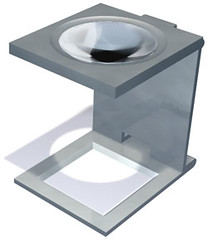A division of Unilever is moving away from spot colors for their packaging printing. I would guess the six "process" inks are CMYK plus green and orange, like Hexachrome, or rich blue and orange -- seems like rich blues are more sought after than bright greens.
Most of the advantages to moving to such a system have to do with cutting makeready time, and allowing more flexibility to gang up unrelated labeling together. This might be more important in markets that require a lot of regional adaptation than it is here in the U.S...
Judging by a similar trial I've seen, a six color system still leaves a lot of colors a bit out of gamut. I also have to imagine that this isn't targeting traditional flexography. Small type on a flexo label, built out of two or three inks, would look pretty bad.
This system has serious implications for the design "end user." No area of the design could have more than four different inks in it, so the ordinary human brain wouldn't be trusted to pick colors directly: familiar desktop design applications won't give you a palette with six sliders in it. If I recall, the old Hexachrome system dictated that designers go over to an RGB workflow, with separations created by proprietary software once it left the desktop.
For most imagery, the designer would never know what the exact color build was. Instead, they would only know what the values in RGB on the desktop were, and color management software would do the rest.
So the color management business would have a lot to gain by adoption of extended gamut printing.
Thanks to David Johnson for the tip.
